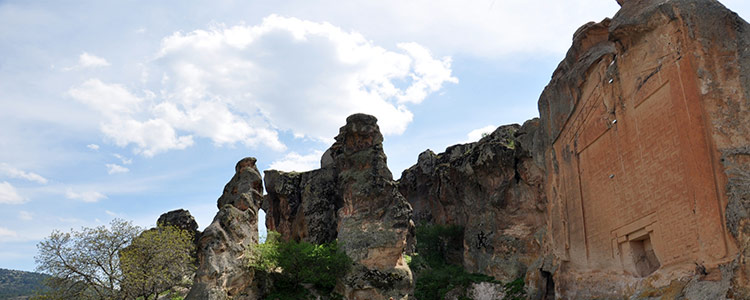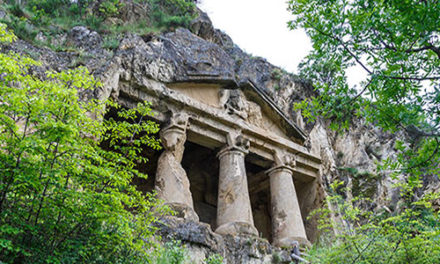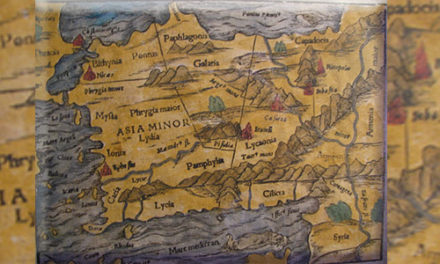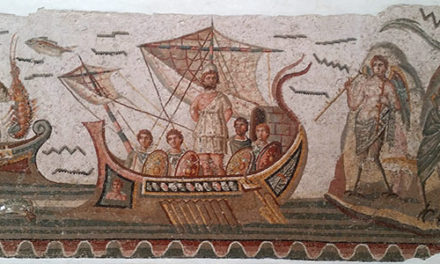After the collapse of the Hittite Empire at the beginning of the 12th century BC, the political vacuum in central/western Anatolia was filled by a wave of Indo-European migrants and “Sea Peoples”, including the Phrygians, who established their kingdom, with a capital eventually at Gordium. About the period of the Trojan War (early 12th century bc). The Phrygians (PHRYGIA) aroused as a society after 750 BC and developed an advanced Bronze Age culture.
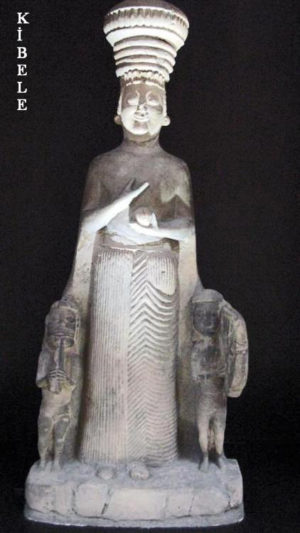 Cultural identity
Cultural identity
Phrygia retained a separate cultural identity. Classical Greek iconography identifies the Trojan Paris as non-Greek by his Phrygian cap, which was worn by Mithras and survived into modern imagery as the “Liberty cap” of the American and French revolutionaries.
The earliest traditions of Greek music derived from Phrygia, transmitted through the Greek colonies in Anatolia, and included the Phrygian mode. Phrygian Midas, the king of the “golden touch”, was tutored in music by Orpheus himself, according to the myth. Another musical invention that came from Phrygia was the aulos, a reed instrument with two pipes.
The Phrygians spoke an Indo-European language. Although the Phrygians adopted the alphabet originated by the Phoenicians, and several dozen inscriptions in the Phrygian language have been found, they remain untranslated, and so much of what is thought to be known of Phrygia is second-hand information from Greek sources.
Cybele
It was the “Great Mother” Cybele, as the Greeks and Romans knew her, who was originally worshiped in the mountains of Phrygia, where she was known as “Mountain Mother”. In her typical Phrygian form, she wears a long belted dress, a polos (a high cylindrical headdress), and a veil covering the whole body.
The Phrygians also venerated Sabazios, the sky and father-god depicted on horseback. Although the Greeks associated Sabazios with Zeus, representations of him, even at Roman times, show him as a horseman god.
Mythic past
Mythic kings of Phrygia were alternately named Gordias and Midas. In the mythic age before the Trojan war, during a time of interregnum, Gordius (or Gordias), a Phrygian farmer, became king, fulfilling an oracular prophecy. Myths surrounding the first king Midas connect him with Silenus and other satyrs and with Dionysus, who granted him the famous “golden touch”. In another episode, he judged a musical contest between Apollo, playing the lyre, and Pan, playing the rustic pan pipes. Midas judged in favor of Pan, and Apollo awarded him the ears of an ass. According to the Iliad, the Phrygians were Trojan allies during the Trojan War.
Josephus claimed the Phrygians were founded by the biblical figure Togarmah, grandson of Japheth and son of Gomer: “and Thrugramma the Thrugrammeans, who, as the Greeks resolved, were named Phrygians”.
The site
The so called Phrygian Valley, in mid Aegean District is a very impressing site whispering the life style and beliefs of the Phrygians. A series of digs have opened Gordium as one of Turkey’s most revealing archeological sites. A tomb of the Midas period, popularly identified as the “Tomb of Midas” revealed a wooden structure deeply buried under a vast tumulus, containing grave goods, a coffin, furniture, and food offerings (Archaeological Museum, Ankara).
_____________________________________________________________________
WORLD HERITAGE ON TENTATIVE LIST
Mountainous Phrygia, Eskisehir-Kutahya-Afyon (2015)
KEY SITES: The Phrygia Valley between Afyon and Eskisehir.
MUSEUM: Especially the Ankara Museum of Anatolian Civilisations Museum

